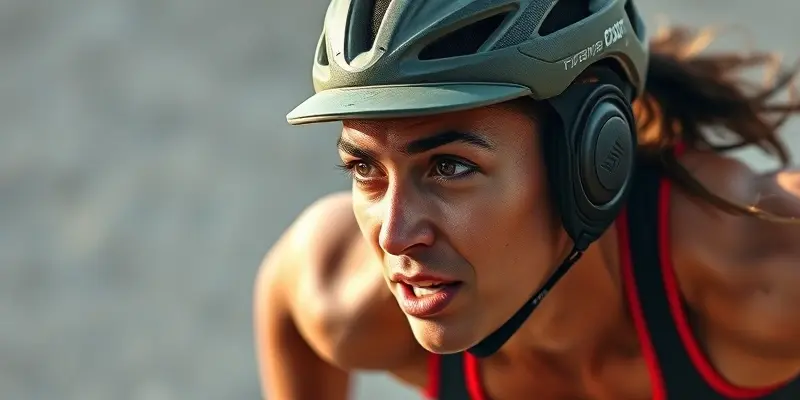Overstriding Correction Drills: Boost Recovery, Prevent Injuries, Run Stronger
Have you ever wondered why some runners glide effortlessly while others seem to struggle, battling aches and pains? The secret often comes down to stride mechanics—and overstriding is an invisible culprit that threatens both beginners and seasoned athletes. If you’re keen on staying healthy, recovering smarter, and shaving time off your mile, correcting your stride could be a game changer.
Let’s break down what overstriding means, why it matters for injury prevention and recovery, and most importantly, how you can fix it with simple, science-backed drills.
What Is Overstriding (And Why Does It Happen)?
Put simply, overstriding happens when your foot lands far ahead of your body’s center of mass, often with a straight leg. Imagine slamming on a car’s brakes each step—that’s what happens to your joints and muscles! This habit can sneak in during sprints or distance runs, especially if you’re tired, excited to go fast, or mimicking runners you see on TV.
Who’s at risk?
- New runners trying to lengthen their stride for speed
- Experienced athletes increasing mileage or recovering from injury
- Anyone training on hard surfaces or with poorly fitting shoes
Typical signs include heavy landings, slapping feet, nagging shin splints, or tight hips and hamstrings.
Why Correcting Overstriding Matters
Overstriding isn’t just a technical flaw—it’s a setup for setbacks. Landing with your foot too far out creates excessive shock through your heels and knees, leading to common injuries like:
- Shin splints
- Stress fractures
- Plantar fasciitis
- IT band syndrome
Think of it like constantly braking while cycling uphill—it wastes energy and wears you down. Improving your stride reduces this “braking force,” making each step more efficient and less damaging—vital for both injury prevention and effective recovery from setbacks.
Practical Overstriding Correction Drills
Ready to take action? Here are evidence-based drills used by athletes and coaches worldwide. Each drill is simple, safe for all skill levels, and easy to add to a weekly routine.
1. A-Skips
- What: Skip forward, lifting your knee and toe, then drive your foot down beneath you.
- Why it works: Instills the habit of landing under your center of gravity, engaging glutes and calves.
- Tip: Focus more on rhythm than height. A 2–3 minute set before your run works wonders.
2. Increase Your Cadence
- What: Gradually raise your running step rate to around 180 steps/minute (use a metronome app).
- Why it works: Shorter, quicker steps naturally reduce overstriding.
- Tip: Try adding 5–10% to your usual cadence for one-minute intervals during easy runs.
3. Running on the Spot
- What: Practice running in place, landing lightly, then slowly move forward while maintaining the same rhythm.
- Why it works: Helps your brain and muscles memorize ideal foot placement.
- Tip: Do three 1-minute rounds after a warm-up.
4. Sweeps and Swings
- What: While standing on one leg, sweep the other lightly forward and back, focusing on a soft mid-foot landing.
- Why it works: Builds balance and awareness of proper stride mechanics.
- Tip: Incorporate these as dynamic stretches in your pre-run routine.
5. Uphill Intervals
- What: Run short, controlled intervals up a mild incline (4–5%).
- Why it works: Hills naturally promote landing under your body, making overstriding almost impossible.
- Tip: Try four 3-minute uphill repeats with rest in between.
6. Barefoot Strides
- What: Run 3–5 short barefoot sprints (50–100 meters) on soft grass at moderate intensity.
- Why it works: Encourages efficient midfoot striking and strengthens foot muscles.
- Tip: Start with one or two strides if you’re new to barefoot running.
Beyond Drills: Supportive Strategies for Recovery
Correcting your stride is just one piece of the injury-prevention puzzle. Here’s how to support your body as it adapts:
Nutrition & Recovery
- Focus on anti-inflammatory, protein-rich foods for muscle repair.
- Stay hydrated.
- Consider magnesium, calcium, and vitamin D for bone and muscle health—especially if you’re healing.
Mindset & Tools to Stay on Track
- Set small, specific goals (e.g., “maintain cadence for two minutes”).
- Use video analysis apps (like Hudl Technique) to check your form.
- Enlist a friend, coach, or online group for motivation—accountability boosts results.
Take Your Next Strong Step
Overstriding is common, but fixable. A few weekly drills and mindful tweaks can cut your injury risk while making every stride count. Start with just one suggestion from above—maybe A-skips or a cadence check—and see how you feel in a week.
Have you tried any of these drills, or do you have your own recovery tips? Drop a comment below—let’s keep Gympulse Club a place where athletes of all levels can run strong and healthy, together.
Written by your GymPulse fitness expert — blending years of coaching, injury recovery, and performance science for your success!

